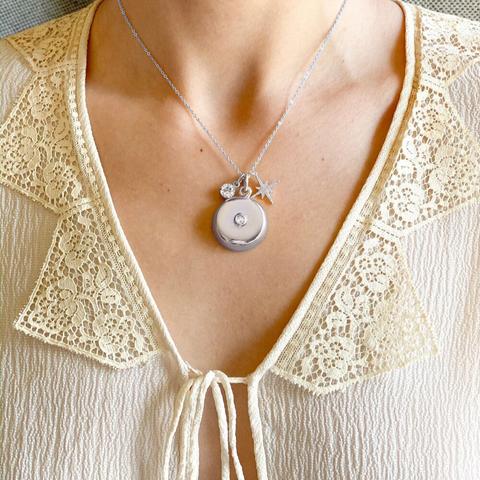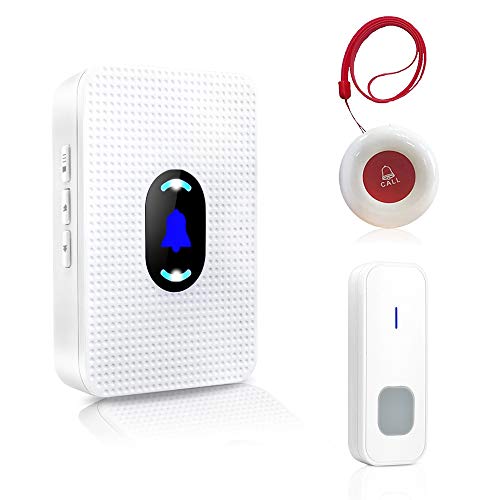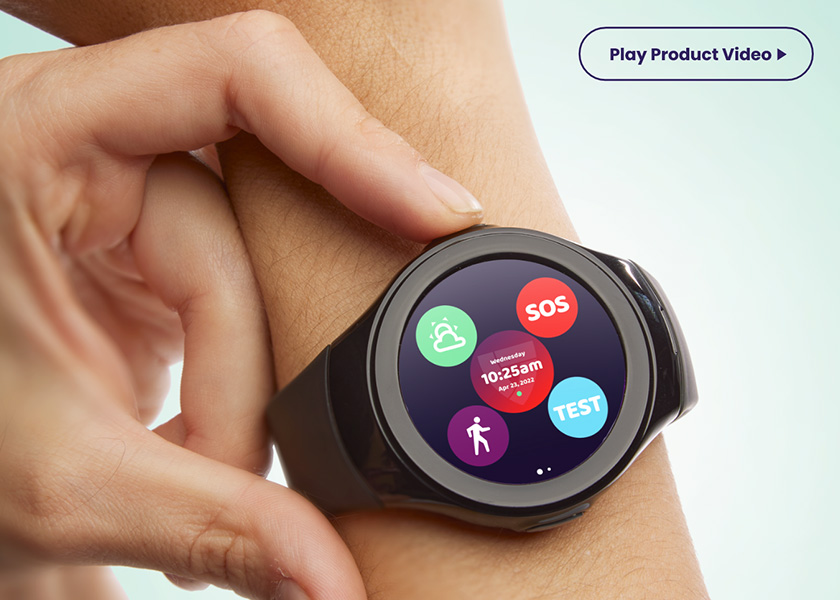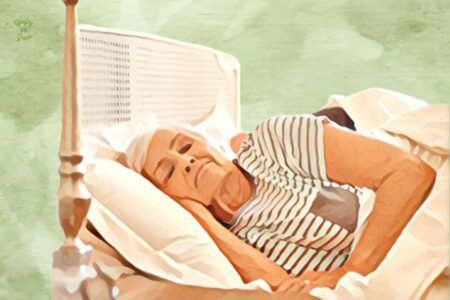Caregivers and families of beloved seniors and elders have to have a way of knowing when they require assistance. Being there without knowing if they need help, slip, or fall can be hard. Younger family members usually have full-time jobs and maybe even kids of their own, stretching their responsibilities.
Caregiver call buttons can fill the void, often meaning the difference between survival and fatality. The best caregiver call buttons help out with things like:
- People falling: This can happen anywhere from breezeways to bathrooms, resulting in brain injuries, spinal cord issues, concussions, and broken bones. Half of those 80 and up fall annually, and 9,500 annual falls result in fatalities.
- Relatives needing help getting to the bathroom: Incontinence and lost mobility both happen with aging for many, so calling for help can prevent older relatives dealing with incontinence from messing themselves up and embarrassing themselves. This seriously helps in fighting off depression and maintaining self-esteem.
- General assistance: This can cover anything from bathroom help and repositioning to hunger, pain, and other symptoms needing attention.
The Advantages Of Emergency Call Buttons
Call buttons are effective tools for those taking care of seniors and elderly loved ones, as technology can reduce your considerable burden. Depending on the make and model, these buttons can provide benefits to caregivers and seniors alike, such as:
- Range: Some of these systems have ranges in the hundreds of feet, meaning they can even work to a short distance on the outside. Longer ranges mean that caregivers can still get alerted when their parents or older relatives need help farther away.
- Simplicity: Pagers and buttons can be pretty much operated by anyone. Even those who are arthritic can usually hit a button or squeeze a device to request assistance. There’s not usually any complex fiddling with an intercom or multiple buttons when needing help.
- Fewer Incidents: Personal call buttons and pagers mean someone gets notified when a user needs them. Faster response time and fewer unaddressed incidents dramatically help the quality of life and safety.
5 Best Caregiver Call Buttons
There are quite a few caregiver call buttons available in the current market. The following are five specific makes and models that you should consider:

InvisaWear Safety Jewelry - The Discreet Way to Send an SOS
You can take care of the seniors in your life, and one of the best ways is to ensure they are always safe, no matter where they are.
This is especially true for senior women, among the most vulnerable in our society. One way to make your elderly loved ones feel safer is to give them Invisawear safety jewelry.
These beautiful jewelry pieces, such as necklaces, keychains, bracelets, scrunchies, etc., serve a dual purpose. They are not only beautiful accessories but also safety devices that have a hidden button.
Once that button is pressed twice, it will send a text message to up to five pre-selected persons, including the wearer’s location.
This is an excellent way to give senior women, in particular (for men, there is a key chain option!), a greater sense of safety since they can easily get help with pressing a button.
Also, you can even program the jewelry so that it also texts 911 so you can rest assured that if your loved one has a medical emergency, they can quickly get help.
Invisawear safety jewelry will give senior women peace of mind and their loved ones. These jewelry pieces are all tasteful and quite discrete, so no one will know that they are actually safety devices.
This call button is a great pager for caregivers taking care of elders in their own homes or even a nursing home. Just one call lets a caregiver have the capability of contacting many different receivers all at the same time. The operational range is robust, at more than 500 feet, and the push call button can be carried around easily. Users can place it by their bedside, wear it on their neck, or put it inside a pocket.
Internal batteries power up the call button and pager. The call button comes with a 1-year standby time, while the pager has a standby of 3 days but can be recharged. Alert prompts are both vibrational and auditory. Loved ones with difficulties in hearing or seeing can still use it because of this. A vibration-only setting is useful for night-time use that won’t disrupt sleep for others.
Pros:
- Batteries last longer thanks to lower power use
- Easy installation
- Portability
- Modern and stylish design
- Buttons are waterproof
Cons:
- Transmitter battery is not rechargeable, needing replacement when drained out
- The user manual isn’t very self-explanatory
- Call buttons aren’t customizable
Exemplary performance levels make this a real award winner, showing up in the top 100 for Red Herring’s list. It was also named a CES top gadget by Women’s Health. Many users report this to be cheaper in the long term than other brands or devices.
The use is fairly straightforward. The tag is paired with your senior-friendly cell phone before you download the app, where you can link specific contacts for emergencies. The Wearsafe tag lets users know when alerts are received and also viewed. This gives the user peace of mind that assistance is on the way. Live audio streaming and geographic location details help contact know what kind of emergency you have and where you are. You never need to charge the tag, but the battery needs replacement twice a year.
Pros:
- Portability
- Works in and outside of the user’s home
- Water-resistant/proof
Cons:
- Biannual battery changes
- No fall detection
- Despite advertising to the contrary, many users/buyers report annual/monthly service agreements and fees necessary
The intention behind this device is for the user to live freely without worrying about how they would ever get the attention of their caregiver at a time they need assistance. Both caregiver and user get peace of mind thanks to this. The operational distance is 500 feet or more, so it can be used in the immediate exterior of some smaller homes.
Portable batteries extend the range, and you can use them on your porch, in your pocket, or in a bag. Users aren’t confined to places with power sources or electrical sockets. For further convenience, the call buttons are wearable like a pendant. Three receivers should be placed where the users spend the most time, and waterproof construction enables bathroom use since that’s where most falls occur.
Pros:
- The package has a pair of receivers with a trio of call buttons
- Waterproof call buttons and neck strap for pendant-style use
- 55 different ringtones to pick from
- Plug-and-play installation
- Five adjustable volume settings, maxing out at 100dB for those hard of hearing
Cons:
- The transmitter button only uses a 23A 12V alkaline battery
- Many users complain of difficulty in locking in their chosen ringtone
- High return rates, given early unit failures and lack of reliability
This is one simple device to use. Seniors you care for with vision issues are likely to prefer oversized icons. There’s also an audio feature for reading out messages and providing the date and time out loud. Freedom Guardian guarantees two-way communications 24/7, and dispatchers can triangulate user positions via WiPS and GPS if the senior can’t tell the operator where they are currently located.
Alerts and reminders can be programmed to help the seniors stay on schedule, and they can even get weather forecasts for the next three days. This will help them avoid rainstorms if their knees aren’t already warning them of an incoming storm front. (Don’t argue with your older parents or relatives; this really is a thing you’ll discover if you last as long as they already have.)
Pros:
- Simplicity
- Light in weight
- Wear inside and outside of the home
- Ul certification
- Real-time reminders, alerts, and text messages
Cons:
- Only usable on AT&T network for service
- Numerous potential issues and complications
- The support department often cited as less than helpful
This model lets your older loved one push a button and directly dial 911 for emergency dispatch. You and they both have the peace of mind that professional help is coming. It’s usable at home and out and about, which is great for seniors with active social lives. A lanyard connector lets users clip it on their belt or bag, and no maintenance or monthly fees keep things cheap.
Pros:
- 1-year standby life for the battery
- Usable with all cellular carriers
- No subscription fees
- Portability, mobile technology
Cons:
- Must be in areas with cell towers
- Testing involves calling 911, so explain what’s going on to avoid legal trouble
Low-Tech Ideas for Calling for Help
Modern technology ironically gives modern call buttons and bells quite a few bells and whistles. However, for all the wonderful features available, they can also be tremendously complicated pieces of work. Installation and programming can be burdensome, as it can be just as overwhelming for elders as it is for caregivers.
This is why some families actually resort to low-tech ideas like old-fashioned bells with manual strings or even interior doorbells for the elderly to use to get help.
Pros:
- Manual bells and wired doorbells will work in rural areas without a cell signal
- Manual bells work when power is out
- Seniors might be more comfortable with traditional technology
Cons:
- Wired doorbells might not work during a power outage
- Only useful in a multigenerational home; caregivers need to be there to hear the bells
- Doorbells or bells might be mistaken for the front door and ignored, or just slept through and unheard in far corners of the home
Alternatives to Call Buttons
Some alternative devices and solutions can be used in place of traditional caregiver call buttons, especially considering seniors’ diverse needs and preferences. Here are some options:
- Smart Watches and Wearable Technology: Many smartwatches have built-in emergency call features, health monitoring (like heart rate and fall detection), and GPS tracking. They can be more appealing due to their modern design and additional functionalities.
- Mobile Phones with Emergency Features: Some mobile phones are designed specifically for seniors, featuring large buttons, simple interfaces, and emergency call functions. They can be carried around and used for regular communication as well.
- Voice-Activated Assistants: Devices like Amazon Echo or Google Home can be set up to make calls or send alerts using voice commands. This can be particularly useful for individuals with difficulty moving or pressing buttons.
- Home Monitoring Systems: Comprehensive home monitoring systems can include motion sensors, cameras, and wearable devices that alert caregivers or family members if unusual activity is detected, like a lack of movement for an extended period.
- Personal Emergency Response Systems (PERS): These systems usually have a wearable pendant or bracelet and a base station. They can be programmed to call emergency services or designated contacts when activated.
- Check-In Services: Some companies offer check-in services where a call center agent regularly calls the senior to ensure they are okay. Emergency contacts are notified if the senior does not answer after a certain number of attempts.
- Medical Alert Apps: There are smartphone apps designed to function as medical alert systems, allowing users to send an SOS with their location to a predefined list of contacts.
- Fitness Trackers with SOS Features: Some fitness trackers come equipped with features that allow users to send an SOS message or call for help. These devices also monitor physical activity and health metrics.
- Text-Based Alert Systems: For seniors comfortable with texting, systems that allow them to send a quick text message to a group of caregivers or family members can be an effective alternative.
- Two-Way Radios: In smaller settings like a single home or small community, two-way radios like walkie talkies can be an effective way for seniors to communicate quickly with caregivers nearby.
Each of these alternatives has its own set of advantages and may be more suitable for different lifestyles, mobility levels, and technology comfort. It’s important to consider the specific needs and preferences of the senior when choosing the best option.
Final Thoughts
Medical alert systems, watches, and personal alarms can be life-saving devices for the right people. They give families peace of mind by offering security and guaranteeing the safety of older or infirm loved ones. If you’re considering how to help your aging parents or relatives, then any of these options might be suitable.
Make sure you pick the right option regarding functionality and how it fits your family. If you choose something involving a monitoring service, look into the specific service provider as much as you do the device itself.


















